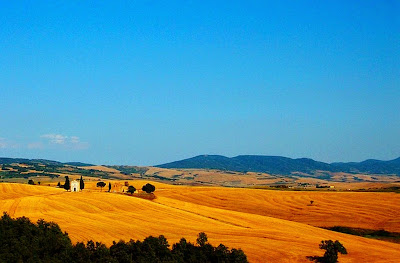 |
| Photo by Seb Tribie (Love you, buddy) |
It was a hot day in July, 2004, probably about 110° Fahrenheit, but a dry heat, and I was on the isle of Capri with a handful of friends, looking for something to do. We wandered along the main Corso reading menus and taking pictures when we spotted her, a little old woman sitting on the pier at a folding table with a sign that read "RENTALS." Figuring she was sold out to Americans, my buddies elected me to venture over and mangle some Italian in an attempt to determine if renting a boat was a thing.
Turns out, it was. There, on the salt and sun-baked driftwood pier, this eighty-something year-old Strega Nona clapped her aluminum credit card slider across our plastic and handed us a key. Out of nowhere, a young shirtless guy with skin the color of aged bronze hoisted himself onto the wood and started gesturing for us to follow him, babbling in an indecipherable dialect. He had a fifteen footer with a massive outboard, and in forty-five seconds he'd taught us how to start the thing and guide the throttle. Then he monkeyed back up to the pier and vanished. My buddy Dave fired up the engine and we were, to our sudden amazement, flying across the Mediterranean's indigo whitecaps, salt, sun, and a few thousand years of history spraying our bodies.
That evening we spent a night on the town, and the girls were amused by the rows of Vespas parked along the streets, posing here and there for pictures on them. Italy is the one country in the world where young women don't have to worry about offending men by taking liberties with their possessions. As an Italian American, I can say with some accuracy that our mindset is almost always focused on meeting the most liberated women on the planet. Needless to say, we had a lot of fun that summer.
Biehl's second perfume from Geza Schoen is the olfactory encapsulation of free-spirited Italian fun, a sumptuous blend of sweet Campari, slightly vanillic castoreum, angelica, mandarin orange, artemisia, tonka, and musk. The Campari and citrus mixed with subtle animalics lends the perfume a distinctly sunny vibe, while the artemisia and angelica give it a dusky, early-autumnal feeling, the scent of earth well scorched. This composition is flawlessly balanced and pleasing to the nose. It's not the least bit challenging or even particularly unique, save for its handling of an unconventional liquor note, and material quality is decidedly designer grade, but the effects of the notes and their arrangement are very enjoyable to me.
gs02 is something I reach for from time to time. Something about its fragrance reminds me of burnt hilltops and warm ocean waters the color of spearmint and sapphires. I just want to thank Mr. Schoen for that.



